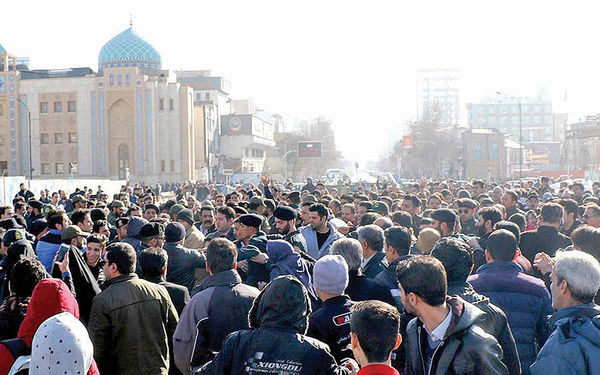Possibility of new protests in Iran still exists

A Professor of Economics in Tehran believes: “If the government continues to pursue its misguided policies, add to that the economic pressures of the sanctions, and a possibility of new protests erupting in Iran in 2019 still exists.”
Professor of Economics at Allameh Tabatabi University, Dr Farshad Momeni said in an interview: “When protests take place, it is the first obvious signs that are initially pointed at. But, in retrospect, a deeper analysis of the situation exposes the deeper issues. To this end, I will refer to my book entitled Social Justice, Freedom, and Progress in Modern Day Iran [Edalat-e Ejtema’ei, Azadi, va Tose’eh dar Iran-e Emruz] which was published six months prior to the December 2017 protests.”
He added: “In one of the chapters called The noble tolerance of poverty by the Iranian people [Modara-ye Najibaneh-ye Mardom-e Iran ba Faghr], I deal with the process of change in the quality of life in Iran. By quoting the reports of the Statistical Center of Iran and the Central Bank of Iran (CBI), I have shown that urban households are focused on saving on vital nutrients, which is very worrying. Statistics show that, in 1989, Iranians consumed 122kgs of red meat annually. This figure was reduced to 78kgs five years later, dropping to 40kgs in 2012. Urban households have also experienced a downward trend in the consumption of fish, poultry, dairies, and certain starches such as rice.”
The Professor reiterated: “From the viewpoint of political economy, such economizing on food items indicates a difficult living. As such, I warned the authorities before the December unrests in 2017 that the noble tolerance shown by the people towards the government’s impoverishing economic policies is not unlimited and eternal. When housekeeping money is cut to the bone, the country will be faced with unpredictable, popular reactions.”
Momeni pointed to the impact of the unemployment variable in the lead up to the protests, stating: “I write in my book that, based on studies, a small percentage of the working population in Iran has a full-time job. But even this small percentage is hardly able to make ends meet. Our young age pyramid and the large number of people in temporary jobs in Iran prevents us from making any faux pas in creating employment as this can be a very serious sign of danger; because there is a high potential of unrest in these parameters.”
He added: “It can be concluded that the upheavals of December 2017 were the result of livelihood issues by the middle and working classes. Nevertheless, emphasizing the economic aspects does not give leeway to ignoring the cultural, social, political, and international dimensions of what came to pass.”
This economic analyst continues by saying that inequalities in society and the fall of the middle class population into the lower middle classes towards the end of Ahmadinejad’s government were apparent even then, reminding: “Towards the end of his term in office, Ahmadinejad’s cabinet tried to advertise for itself that the Gini ratio in Iran is not an indication of reduction in unjustified inequalities; because, at that time, Iran was already faced with investment and brain drain, underlining the economic crisis in the country. In 2012, Mrs Soheila Parvin wrote an article showing that the prevailing economic conditions have led to the drop of the middle classes into the lower middle classes. This was not a good sign for our society.”
He emphasized: “Therefore, if misguided economic policies and sanctions pressures continue during President Hassan Rouhani’s second term in office, there is a possibility of more protests erupting in 2019. Both the government and the parliament must refrain from signing any inflationary policies.”
To the question of why no protests took shape in Iran in the 1990s despite soaring inflation, Momeni answered: “We did face various protests in the 90s due to economic pressures. Some people may have forgotten about them; but studies at the time showed that people’s demands were merely rooted in the economy, and this has continued to date. As such, a repeat of the protests now as a result of sanctions is not very far-fetched and unlikely.”
Source: Persia Digest

